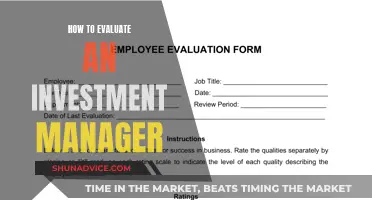
A managed investment trust (MIT) is a popular investment vehicle for foreign investors in Australia. The key benefit of an MIT is to access the concessional withholding tax regime, which offers reduced rates of withholding tax on fund payments from the trust. To be eligible for this regime, the trust must satisfy a widely held ownership requirement and a substantial proportion of investment management activities must be carried out in Australia.
| Characteristics | Values |
|---|---|
| Investment type | Direct investment or through a company, trust, joint venture, managed investment scheme, or partnership |
| Tax purposes | Concessional withholding tax regime |
| Eligibility requirements | Ownership requirement and investment management requirement |
What You'll Learn

Ownership requirement
The ownership requirement is one of the two critical eligibility requirements to access the managed investment trust regime. The trust must satisfy a widely held ownership requirement and must not be closely held under the applicable tests. This means that the trust should not be controlled by a small group of individuals or entities, but rather, have a diverse range of owners or beneficiaries. This requirement is in place to ensure that the benefits of the managed investment trust are distributed among a broader group and not concentrated in the hands of a few.
The widely held ownership requirement can be satisfied in several ways, depending on the specific structure and nature of the trust. One common approach is to have a large number of beneficiaries, each with a small ownership stake, rather than a few beneficiaries with larger ownership interests. Additionally, the trust can be structured to allow for the periodic rotation or diversification of ownership interests, preventing the concentration of ownership over time.
Another important aspect of the ownership requirement is the prohibition on close holding. This means that the trust should not be closely held or controlled by a single entity or a small group of entities. This requirement ensures that no single party or group has undue influence or control over the trust and its assets. It promotes a more democratic and distributed decision-making process, aligning with the purpose of a managed investment trust.
To demonstrate compliance with the ownership requirement, the trust must meet certain quantitative tests. These tests typically assess the distribution of ownership interests, the diversity of beneficiaries, and the level of control or influence held by individual owners. The specific tests and criteria can vary depending on the jurisdiction and the applicable regulations.
It is important to note that the ownership requirement is not static but is subject to ongoing compliance. The trust must continuously satisfy the widely held ownership requirement throughout its existence. This ensures that the benefits of the managed investment trust continue to be distributed fairly and prevent any potential concentration of ownership or control over time.
In summary, the ownership requirement for a managed investment trust entails demonstrating a widely held ownership structure and avoiding close holding. This requirement is crucial for accessing the concessional withholding tax regime and the associated benefits. By satisfying this requirement, the trust promotes a more equitable distribution of benefits and aligns with the regulatory objectives of the managed investment trust regime.
Savings, Investment, and Their Intricate Balance Sheet Equation
You may want to see also

Investment management requirement
To set up a managed investment trust, one of the two critical eligibility requirements is the investment management criterion. This criterion states that a 'substantial proportion' of the 'investment management activities' must be carried out in Australia. One Investment Group is considered the leading provider of trustee, custody, and investment manager services to MITs in Australia. They assist with establishing and maintaining MITs and their Australian Financial Services Licensees are authorised to act as Trustee and investment manager to MITs.
The Trustee is responsible for the compliance and governance of the MIT, ensuring ongoing legislative and regulatory requirements are met, overseeing the operations and administration of the MIT, holding title to the MIT's assets, and operating the MIT's bank accounts.
One Investment Group currently acts as Trustee of over 300 trusts with over $35 billion in assets. They have a wealth of experience in acting as a Responsible Entity for registered schemes and offer a range of services to assist with the establishment and management of managed investment trusts.
Invest Wisely to Secure Your Dream Home
You may want to see also

Trustee services
Selecting a Trustee
When choosing a trustee, it is essential to consider their qualifications and ability to manage the trust effectively. While it is possible to select a friend or family member, many people prefer to choose an unbiased third-party trustee, such as a bank or a professional trustee. Professional trustees offer the advantage of being removed from family dynamics and can make objective decisions in the best interest of the beneficiaries. Additionally, financial institutions often have experienced trust administrators who are skilled in handling family dynamics that may arise during the trust management process.
Role of the Trustee
The trustee's role is critical in ensuring the proper management and administration of the trust. They are responsible for overseeing the trust assets, ensuring compliance with legal and regulatory requirements, and distributing funds according to the grantor's wishes. Trustees are also in charge of the trust's operations, administration, and holding title to its assets. They manage the trust's bank accounts and work closely with other professionals, such as attorneys and tax accountants, to finalise funding and initiate the administrative process.
Benefits of Professional Trustees
Professional trustees, such as banks or financial institutions, offer several advantages. They have the expertise and experience to navigate complex trust administration processes and ensure compliance with legal and regulatory requirements. They can also provide valuable insights into potential tax implications and offer unbiased advice. By selecting a professional trustee, grantors can have peace of mind knowing that their wishes will be carried out effectively and efficiently.
Trustee Fees and Costs
It is important to consider the fees and costs associated with trustee services. Trustee fees vary and may include ongoing administrative costs, such as trustee fees, tax preparation fees, and legal fees. These costs should be weighed against the benefits provided by the trustee and the complexity of the trust. Consulting with multiple trustee candidates and obtaining quotes can help grantors make an informed decision.
Best Sites for Tracking Your Investment Portfolio
You may want to see also

Investment manager services
One Investment Group, a leading provider of trustee services in Australia, offers valuable insights into the role of investment managers in MITs. They highlight the eligibility requirements for MITs, which include a widely held ownership requirement and the mandate to carry out a substantial proportion of investment management activities within Australia.
The role of the investment manager in MITs is multifaceted. They are responsible for ensuring ongoing compliance and governance of the MIT, meeting legislative and regulatory requirements, and overseeing the operations and administration of the trust. Additionally, investment managers hold the title to the MIT's assets and operate the trust's bank accounts.
By partnering with a reputable investment manager like One Investment Group, investors can leverage their expertise in establishing and maintaining MITs. Their experience in acting as a Responsible Entity for registered schemes and their authorisation to act as a Trustee and investment manager under the Australian Financial Services Licensees further enhances their capabilities in this domain.
The benefits of engaging investment manager services extend beyond compliance and governance. Investment managers play a pivotal role in maximising the tax benefits associated with MITs. Under the MIT withholding tax regime, foreign investors who reside in countries with effective information exchange on taxation matters with Australia are eligible for reduced withholding tax rates on fund payments. The investment manager's role is crucial in ensuring the trust satisfies the eligibility criteria and helps investors optimise their tax position.
In conclusion, investment manager services are an integral part of the MIT structure, offering expertise in compliance, governance, and tax optimisation. By engaging the services of a reputable investment manager, investors can navigate the complex world of MITs with greater confidence and maximise the benefits of this popular investment vehicle.
Investing While Saving for a Home: Wise or Risky?
You may want to see also

Tax implications
The tax implications of setting up a managed investment trust depend on the jurisdiction and the structure of the trust. In general, trusts can provide tax advantages, such as reducing estate taxes by removing assets from the estate through an irrevocable trust.
In the United States, for example, a large estate may be subject to federal estate tax when the grantor passes away. Irrevocable trusts can lower such taxes by removing assets from the estate. Additionally, beneficiaries and heirs may be subject to inheritance taxes, which vary depending on the inheritor's relationship to the grantor. While there is no federal inheritance tax, some states have their own inheritance taxes.
Trust assets that generate income may also trigger income taxes or capital gains taxes. The tax liability depends on who legally owns the assets. Charitable donations may be exempt from these taxes. If a trust generates income, the trustee must pay the applicable taxes on that income.
In Australia, a managed investment trust ("MIT") offers access to a concessional withholding tax regime. Under this regime, foreign investors who are residents of a country with which Australia has an effective exchange of information on taxation matters are eligible for a reduced rate of withholding tax on fund payments from a MIT. The rate of withholding tax depends on the residence of the investor. To access this regime, the trust must satisfy a widely held ownership requirement and have a 'substantial proportion' of its investment management activities carried out in Australia.
It is important to consult with a tax professional or an estate planning attorney to understand the specific tax implications of setting up a managed investment trust in a particular jurisdiction.
Actuaries: Investment Portfolio Management, a Necessary Skill?
You may want to see also







